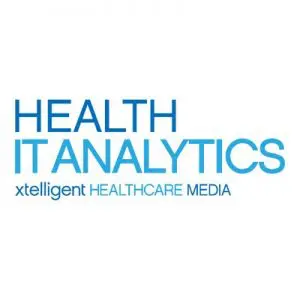By Jessica Kent
Cerner is partnering with Holon Solutions to provide advanced clinical decision support technology for improved patient outcomes.
– Cerner Corporation and Holon Solutions have announced a partnership to offer accelerated, seamless clinical decision support at the point of care.
The organizations will deploy patented technology that will automatically deliver relevant patient information from Cerner’s EHR-agnostic HealtheIntent population health platform directly to clinicians in their workflow to inform care decisions.
For providers caring for at-risk patients in value-based care arrangements, simply having access to patient data isn’t enough. With providers’ mounting clinical and administrative demands, they don’t have time to search through multiple systems for patient information.
Cerner and Holon’s technology will bring curated, patient-specific knowledge directly into provider workflows during a care episode to improve outcomes and reimbursements.
“Holon’s advanced capabilities will help us automatically bring providers relevant information, insights and critical health data to help them guide patient care in a timely manner,” said Ray Herschman, Vice President & General Manager, Health Network and Risk Solutions, Cerner.
“In support of Cerner’s vision of a seamless and connected world where everyone thrives, we’re making it easier and more convenient for providers to use their data effectively and provide a higher quality of care.”
Holon’s technologies will sense provider activity and automatically surface relevant patient information from Cerner to providers in an unobtrusive ribbon that displays alongside the patient chart in the EHR. The Holon technology is designed to support quicker and more efficient delivery of valuable insights without interrupting the provider.
“Delivering critical knowledge at the point of need is the foundation of Holon’s mission in the market,” said Jon Zimmerman, CEO, Holon Solutions.
“We are thrilled to be collaborating with Cerner to ensure the valuable information generated reaches providers when and where they need it – with no effort on the provider’s part – as a huge step toward better quality care, provider experience, business performance, and improving outcomes. We look forward to continuing this exciting journey with the Cerner team, their HealtheIntent clients, and provider users, as we work together to advance better healthcare for everyone.”
Cerner has previously made efforts to improve clinical decision support and help organizations provide optimal, seamless patient care. In 2018, the company worked with Duke Clinical Research Institute to develop an mHealth app that allows clinicians to gauge whether their patients are at risk for heart attack or stroke.
The ASCVD Risk Calculator app pulls in patient data from the EHR to determine the chances that a patient will develop atherosclerotic cardiovascular disease (ASCVD). The digital health tool estimates 10-year and lifetime chances of developing the disease.
“This collaboration demonstrates how the healthcare industry can come together to develop and continually improve an app that has the ability to save lives by the power of SMART on FHIR open source standards,” Kevin Shekleton, vice president and distinguished engineer at Cerner, said in the release.
“We developed this Risk Calculator for our client hospitals and health systems, but open source lets any healthcare organization leverage the technology to help people live healthier lives.”
More recently, Cerner aimed to mitigate the spread of COVID-19 by updating its EHR platform with expanded telehealth capabilities, disease screening controls, and modernized EHR dashboards.
“This is a critical time for our clients who continue to be pushed to unprecedented limits in their heroic efforts to protect the health and safety of organizations, patients they treat and the communities where we live and work,” said Brent Shafer, chairman and CEO of Cerner.
“At Cerner, we understand our responsibility of providing the infrastructure and support they need to help combat this global pandemic. Now, more than ever, our health care clients are relying on our technology, capacity and flexibility in supporting their frontline work to care for patients.”



